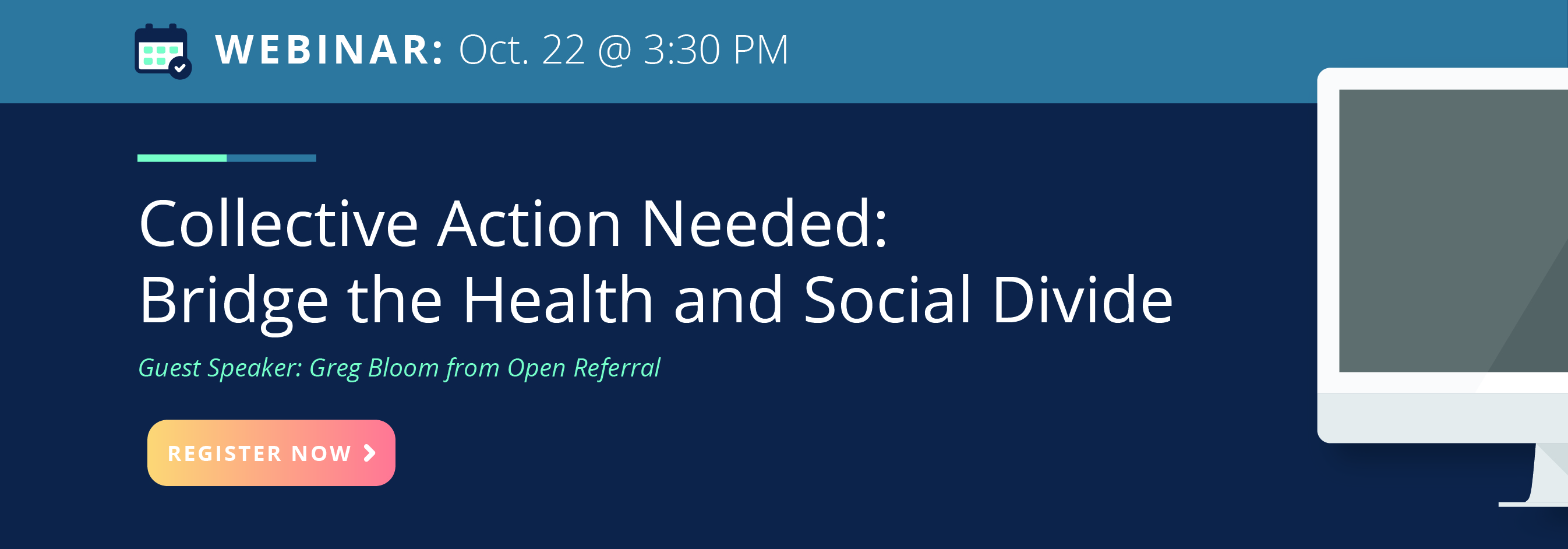As the shift to value-based care continues, organizations from all areas of healthcare and social services are considering how they can make an impact on social determinants of health (SDOH). Health-related social needs such as homelessness, food insecurity, and transportation to clinical appointments affect health outcomes more than healthcare does. Therefore, addressing SDOH through whole-person care is key to an effective population health management strategy.
Since 2013, ACT.md has partnered with healthcare providers and payers to help them advance their SDOH care strategies. Over this time, we've seen first-hand how innovators can reduce healthcare utilization, improve patient/member satisfaction, and integrate care across the local continuum. Along the way, industry leader Social Interventions Research & Evaluation Network (SIREN), shared insights on best practices for SDOH, including care models that incorporate community resource referrals.
SIREN's report, Community Resource Referral Platforms: A Guide for Healthcare Organizations, mentions ACT.md and explains lessons learned and recommendations on how to implement a community resource referral platform. The guide includes the following seven recommendations for platform selection and implementation, based on user experiences from organizations across the country.
1. Engage community partners from the beginning.
From SIREN: "Successful implementation of closed-loop referrals and a coordinated referral network depends on successful engagement of the organizations that will be part of the system." Our partners in Humboldt County, California, offer additional guidance on how to do this well. Specifically, their resource, the Care Coordination Onboarding Guide, published with Data Across Sectors for Health (DASH), offers an informed perspective on how to engage community partners in an SDOH care model.
2. Research optimal options.
From SIREN: "If the ultimate goal is to create a more coordinated health care and social services delivery system, all organizations in a community, including all health care organizations, have an incentive to use the same platform, or at least to use platforms that can easily share information." Another example of how this works in the field can be found in California. Whole Person Care programs have unified incentives and processes across healthcare and social services. This approach in Marin County, in particular, is having a tremendous impact on reducing homelessness and improving health outcomes.
3. Create a clear understanding of your goals and needs.
According to the guide, "consider the kind of assistance that will help patients the most, what staff will be needed to provide that assistance, the information system requirements to support the care team, and the external partners necessary for the system to work." In Massachusetts, the Boston Allied Partners network offers high-quality LTSS care to Massachusetts Medicaid members in the Greater Boston area. They rely on ACT.md's CareHub™ platform to connect their LTSS network, align care teams around person-centered plans of care, and report on impact and ROI to the state Medicaid office.
4. End users are critical in the solution.
From SIREN: "Involve desired end-users in clarifying your goals and needs and identify champions who will lead end users through what will likely be a bumpy implementation process." This is a critical element of the Camden Coalition's care model, managed on the ACT.md CareHub™ platform. The Camden Core Model is a nationally-recognized care intervention for individuals with complex health and social needs. It is rooted in authentic healing relationships that build patients' self-efficacy, and so the entire model has been co-designed with end-users (patients) every step of the way.
Additional tips from SIREN to consider when creating your strategy:
- Compare costs and user experiences with insights from other organizations that have implemented these products.
- Know that this work takes time and that the process of implementing a community referral platform should include learning time built into the product implementation plan.
- Evaluate the impact of SDOH platform use on patient health, patient and care team satisfaction with care, and health care costs and share that information publicly so that the sector as a whole can learn.
Join ACT.md and Open Referral on October 22
We're excited to partner with Greg Bloom, Chief Organizing Officer of Open Referral, the nation's leading advocate for data interoperability across healthcare and social services. Join us Tuesday, October 22, when we discuss current and future SDOH data standards, use cases, and distinct data problems to avoid. We hope to see you there!

Sign Up for the Webinar